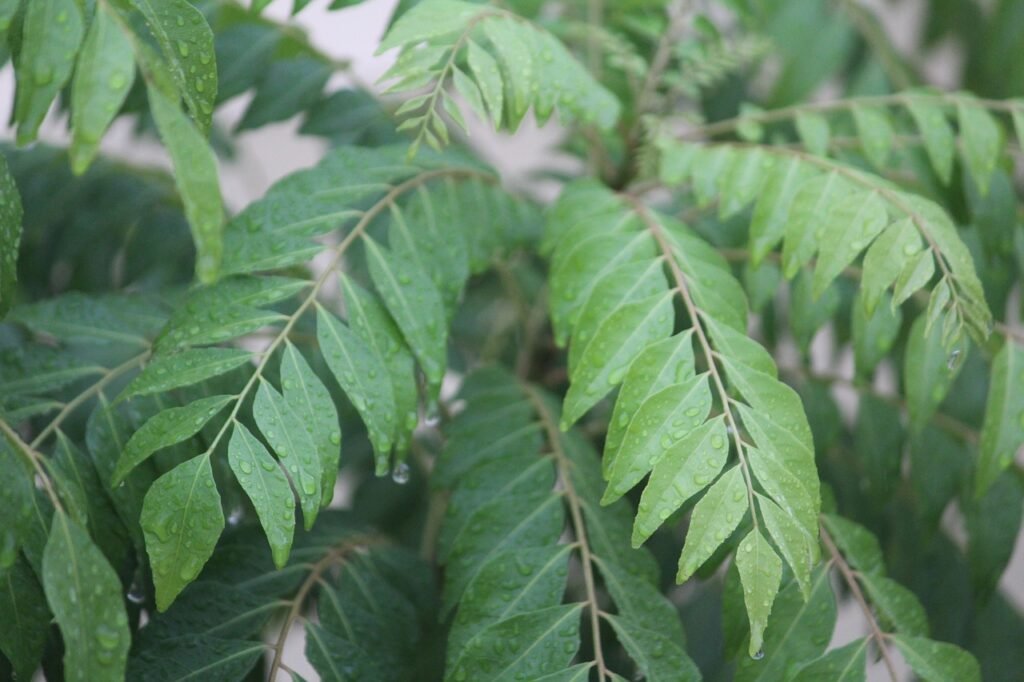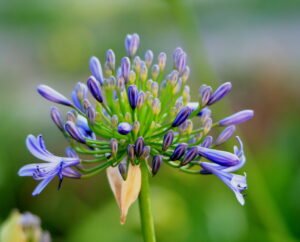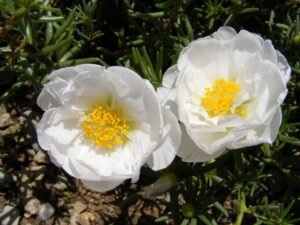How To Plant, Grow, And Care For Curry Tree
The curry tree, also known as Murraya koenigii (syn. Bergera koenigii), is a small tropical tree native to India and Sri Lanka. It belongs to the Rutaceae family and it is highly valued for its aromatic leaves, which are commonly used in Indian and Southeast Asian cuisine to add flavor and fragrance to dishes. This article explains in detail how to plant, grow, and care for Curry Tree or curry leaves plant.

The leaves of the curry tree are the most commonly used part in cooking. They add a unique taste and aroma to curries, soups, stews, and chutneys. The leaves are often used fresh, but can also be dried and stored for later use.
In addition to its culinary uses, the curry tree also has various medicinal properties. It is thought to possess anti-fungal, anti-bacterial, and anti-inflammatory qualities. The leaves are used in traditional medicine to treat digestive issues, improve eyesight, and promote hair growth.
Facts About Curry Tree
Curry leaves have carminative properties that help in relieving indigestion, bloating, and constipation. They stimulate the secretion of digestive enzymes, promoting better digestion.
Studies have shown that curry leaves can help lower cholesterol levels by inhibiting the synthesis of cholesterol in the liver.
The active compounds present in curry leaves have been found to have hypoglycemic effects, making them beneficial for individuals with diabetes.
Curry leaves are rich in antioxidants, which help in neutralizing harmful free radicals and protecting the body from oxidative stress.
The nutrients present in curry leaves promote healthy hair and skin. They are often used in hair oils and skincare products to nourish and strengthen the hair and skin.
Curry leaves are often used in traditional remedies for respiratory conditions such as cough, cold, and asthma. They are believed to help in relieving congestion and promoting clear breathing.
Curry leaves are believed to aid in weight loss by improving metabolism and reducing fat accumulation.
FAQ About Curry Tree
How tall does a curry tree grow?
A curry tree can grow up to 20 feet in height, although it is often pruned to a more manageable size for home cultivation. The tree has a slender trunk and branches that spread out in a graceful manner.
Are curry leaves and curry powder the same?
No, curry leaves and curry powder are not the same. Curry leaves are the leaves of the curry tree and are used fresh or dried in cooking to add flavor to dishes. On the other hand, curry powder is a spice blend made from various ground spices, such as turmeric, cumin, coriander, and fenugreek.
What does curry leaf taste like?
Curry leaves have a unique and distinct flavor that is often described as citrusy, slightly bitter, and aromatic. The taste is difficult to replicate, and it adds a depth of flavor to dishes that is hard to achieve with any other ingredient.
How should curry leaves be stored?
Fresh curry leaves should be stored in the refrigerator in a plastic bag or an airtight container. They can stay fresh for up to two weeks. Dried curry leaves should be stored in an airtight container in a cool, dry place away from direct sunlight.
How To Plant Curry Tree
When it comes to planting a curry tree, it is important to choose a suitable location and provide the right conditions for its growth. Here are the steps to follow:
1. Selecting a Location
Curry trees thrive in warm and humid climates, so it is best to plant them in a spot that receives full sun or partial shade. They can be grown both indoors and outdoors, depending on your climate. If you live in a region with cold winters, it is advisable to grow curry trees in containers so you can bring them indoors during the colder months.
2. Preparing the Soil
The soil need to have good drainage and a high content of organic matter. Before planting, prepare the soil by mixing in compost or well-rotted manure to improve its fertility and drainage. Curry trees prefer slightly acidic to neutral soil with a pH range of 6.0 to 7.5.
3. Planting the Tree
Create a hole that is twice as deep and wide as the root ball of the tree. Be careful not to damage the tree’s roots when you carefully remove it from its container. Make sure the top of the root ball of the tree is level with or slightly above the soil surface when you plant it in the hole. Fill the hole back in with soil, gently compacting it around the roots.
4. Watering
Water the tree well after planting to help settle the soil and promote healthy root-soil contact. Curry trees require regular watering, especially during dry periods. But, since overwatering might result in root damage, it’s crucial to avoid it. Before rewetting, let the top inch of soil dry off.
How To Care For Curry Tree
Now that you have planted your curry tree, let’s explore how to care for it and promote healthy growth:
Sunlight
Curry trees require at least 6 hours of direct sunlight each day to thrive. If you are growing them indoors, place them near a south-facing window or provide supplemental grow lights to ensure they receive adequate light.
Temperature
Curry trees prefer warm temperatures between 60°F (15°C) and 85°F (29°C). They are sensitive to frost, so if you live in a colder climate, it is best to bring them indoors during the winter or provide protection, such as a frost cloth, if they are planted outdoors.
Watering
Water your curry tree regularly, especially during dry spells. The soil should be kept uniformly damp but not soggy. Avoid allowing the tree to sit in standing water, as this can lead to root rot.
Mulching
Around the base of the tree, spread a layer of organic mulch, such as wood chips or straw, to help retain moisture, inhibit weed growth, and enhance soil fertility. Mulch should be kept a few inches away from the trunk to prevent decay.
Pruning
Regular pruning is essential to maintain the shape and size of the curry tree and to encourage bushier growth. Before new growth emerges, prune the tree in the early spring. Remove any dead, damaged, or diseased branches, as well as any suckers that emerge from the base of the tree.
Fertilizing
As you are going to use curry tree leaves in food it is best to feed your curry tree with a balanced organic fertilizer every 4-6 weeks during the growing season (spring and summer), Try to avoid using chemical/synthetic fertilizers. Compost is a natural and nutrient-rich fertilizer that improves soil structure and fertility. It releases nutrients slowly and provides a balanced supply of nitrogen, phosphorus, and potassium. Adding compost to the soil around your curry tree can promote healthy growth and improve its overall health. Follow the manufacturer’s instructions for application rates. These fertilizers are derived from natural sources and are rich in organic matter. They gradually increase soil health by releasing nutrients.
Synthetic fertilizers, on the other hand, are manufactured chemically and provide a quick nutrient boost to the plants. Consider your gardening philosophy and choose the type of fertilizer that suits your preferences.
Pest and Disease Control
Curry trees are generally resistant to pests and diseases. However, they can occasionally be affected by aphids, mealybugs, or scale insects. Keep a close eye on your tree and respond quickly if you notice any signs of infestation. Insecticidal soaps or horticultural oils can be used to control these pests.
How To Harvest Curry Leaves
The leaves of the curry tree are the most prized part of the plant. They can be harvested as needed once the tree is established. Select mature, healthy leaves and snip them off the branches using clean pruning shears. Avoid harvesting more than one-third of the leaves at a time to ensure the tree’s continued growth and vitality.
Storing Curry Leaves
If you have an abundant harvest of curry leaves, you can store them for later use. Wash the leaves thoroughly, pat them dry, and store them in an airtight container in the refrigerator. They can also be dried and stored in a cool, dark place for several months.
With the right care and attention, you can successfully plant, grow, and care for a curry tree. Whether you are a home cook looking to add fresh curry leaves to your dishes or a gardening enthusiast seeking a unique and aromatic addition to your garden, the curry tree is a wonderful choice. Follow the guidelines outlined in this guide, and soon you’ll be enjoying the delightful fragrance and flavor of fresh curry leaves straight from your own tree.






